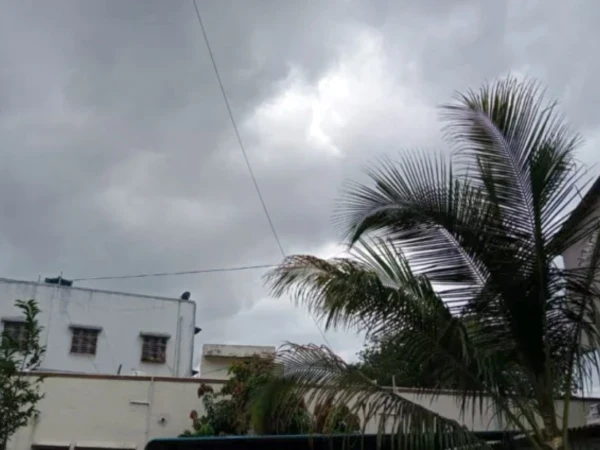- Web Desk
- 1 Hour ago

Smog update: Rs350m earmarked for artificial rain in Lahore
-
- Web Desk
- Nov 24, 2023

LAHORE: In response to the escalating smog crisis in Lahore, the Punjab government has announced a series of measures, including school closures and an innovative artificial rain initiative, to mitigate the environmental and health impacts of the severe air pollution engulfing the region.
In a bold move to tackle the smog crisis, the Punjab government has allocated Rs350 million for artificial rain measures to curb smog. This initiative, primarily focusing on cloud seeding technology, is awaiting approval from the caretaker Chief Minister. Caretaker Information Minister of Punjab, Amir Mir, highlighted the collaboration with Chinese experts, who are expected to visit shortly, to implement this technology.
Sources familiar with the matter reveal that the Finance Secretary’s proposal is now awaiting the nod from the caretaker Chief Minister Mohsin Naqvi, Caretaker Information Minister of Punjab, Amir Mir, shed light on the primary strategy, emphasizing cloud seeding as the quickest artificial rain technology.
Notably, the government has initiated collaboration with China, expecting experts from the country to visit soon. The interim chief minister, keen on testing artificial rain this year, has set November 29 for the experiment, successfully tested in places like Dubai.
SCHOOL CLOSURES DUE TO SMOG

The Punjab Provincial Disaster Management Authority (PDMA) has issued a notification declaring a temporary closure of educational institutions in six districts, including Lahore, Gujranwala, Multan, Sargodha, Faisalabad, and Sahiwal, on Friday, November 24, and Saturday, November 25, 2023. This decision comes as part of the government’s efforts to address the worsening smog situation and its hazardous effects on air quality, particularly in Lahore and its surrounding areas.
BACKGROUND OF THE SMOG CRISIS
Lahore currently holds the dubious distinction of being the world’s most polluted city, with an Air Quality Index (AQI) of 504. The US consulate area in Lahore reports an alarming AQI of 503, while other areas like The Mall, Phase-8 DHA, and Johar Town also report dangerously high levels.
The Lahore High Court (LHC) has expressed dissatisfaction with the Department of Environment’s handling of the crisis, intensifying scrutiny and warning of potential contempt of court notices.
COMPREHENSIVE SMOG MANAGEMENT PLAN

The Punjab government’s plan to combat smog includes:
- Restrictions in six divisions for immediate impact.
- Sunday market closures and Saturday openings post 3 pm for markets, restaurants, and offices.
- Doubling water sprinkling in smog-affected areas.
- Reserving Sundays on Mall Road Lahore for cyclists.
- A three-day ultimatum for brick kilns in the region to adopt smart zig-zag technology, which reduces emissions and improves fuel efficiency.
ENVIRONMENTAL AND HEALTH CONCERNS
The persistent smog has led to a significant increase in residents seeking medical attention for pollution-related ailments. Environmentalists and health experts are closely monitoring the situation, advocating for swift and effective measures to alleviate the crisis.
Three days smog holidays announced for Lahore, nine districts
WHAT IS ARTIFICIAL RAIN?

Artificial rain, also known as cloud seeding, is a weather modification technique designed to enhance precipitation. This process involves dispersing substances into the air that serve as cloud condensation or ice nuclei, which alter the microphysical processes within the cloud. The aim is to increase precipitation (rain or snow), suppress hail, or dissipate fog.
The most common chemicals used for cloud seeding include silver iodide and potassium iodide. These substances are introduced into clouds through ground generators, airplanes, or rockets. When these particles are introduced into the cloud, they encourage the growth of ice crystals or water droplets, which coalesce and grow until they are heavy enough to fall as precipitation.
Artificial rain is used for various purposes, such as increasing water supply for drinking water or irrigation, reducing the size of hailstones that form in thunderstorms, dispersing fog, especially in airports, and sometimes for firefighting purposes.
However, the effectiveness and environmental impact of cloud seeding are subjects of ongoing research and debate. While some studies suggest that cloud seeding can increase precipitation to a certain extent, others question its efficacy and raise concerns about potential ecological impacts and the long-term alteration of weather patterns.
While Lahore is grappling with an environmental emergency, these actions, including the artificial rain project and other measures reflect an effort to address the crisis. Whether or not these efforts bear fruit is yet to be seen






